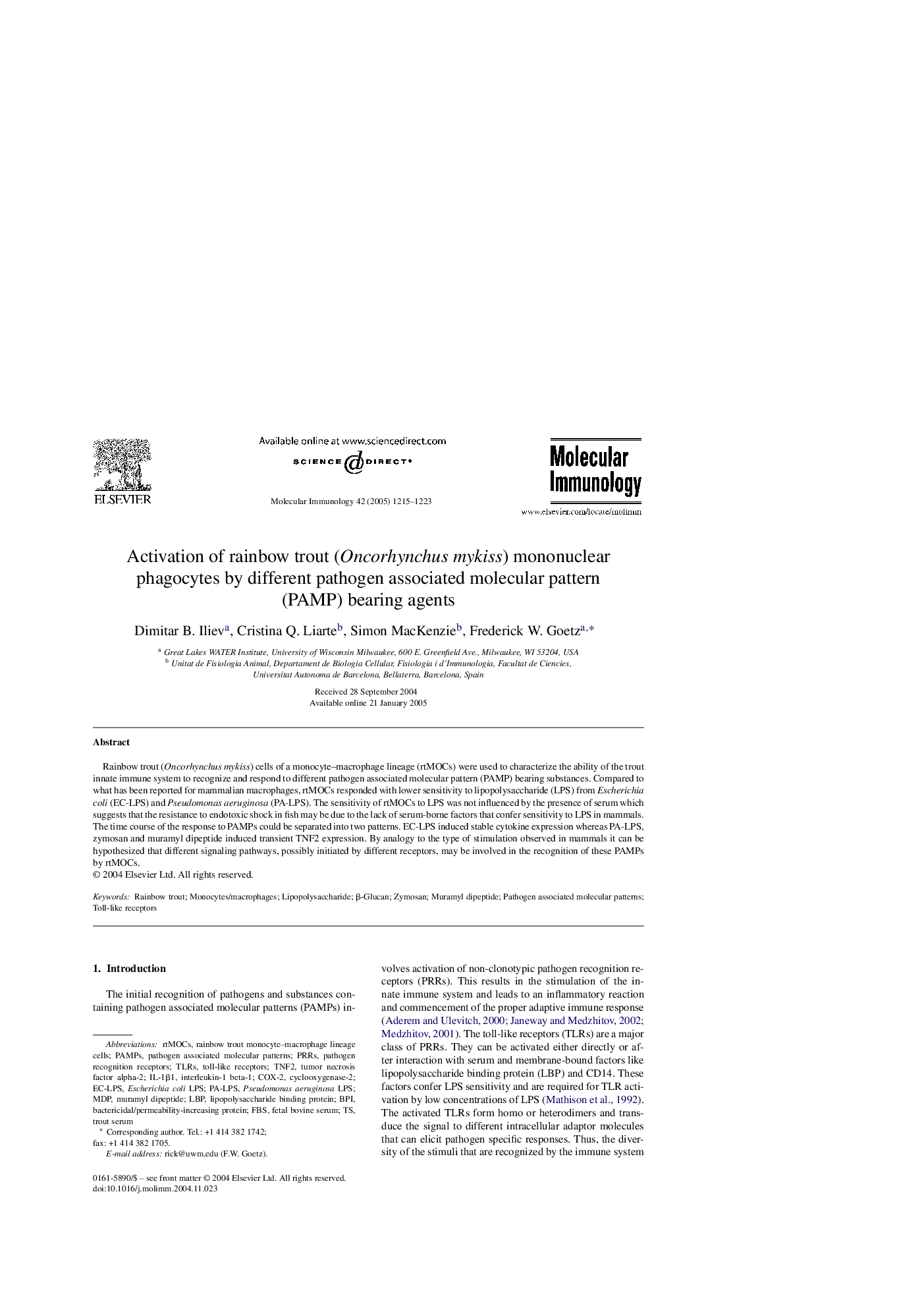| Article ID | Journal | Published Year | Pages | File Type |
|---|---|---|---|---|
| 9141799 | Molecular Immunology | 2005 | 9 Pages |
Abstract
Rainbow trout (Oncorhynchus mykiss) cells of a monocyte-macrophage lineage (rtMOCs) were used to characterize the ability of the trout innate immune system to recognize and respond to different pathogen associated molecular pattern (PAMP) bearing substances. Compared to what has been reported for mammalian macrophages, rtMOCs responded with lower sensitivity to lipopolysaccharide (LPS) from Escherichia coli (EC-LPS) and Pseudomonas aeruginosa (PA-LPS). The sensitivity of rtMOCs to LPS was not influenced by the presence of serum which suggests that the resistance to endotoxic shock in fish may be due to the lack of serum-borne factors that confer sensitivity to LPS in mammals. The time course of the response to PAMPs could be separated into two patterns. EC-LPS induced stable cytokine expression whereas PA-LPS, zymosan and muramyl dipeptide induced transient TNF2 expression. By analogy to the type of stimulation observed in mammals it can be hypothesized that different signaling pathways, possibly initiated by different receptors, may be involved in the recognition of these PAMPs by rtMOCs.
Keywords
BPITNF2MDPPRRsmuramyl dipeptideLBPPAMPsCOX-2FBSTLRsβ-glucanZymosanfetal bovine serumCyclooxygenase-2Rainbow troutlipopolysaccharideMonocytes/macrophagespathogen associated molecular patternslipopolysaccharide binding proteinBactericidal/permeability-increasing proteinpathogen recognition receptorsToll-like receptors
Related Topics
Life Sciences
Biochemistry, Genetics and Molecular Biology
Molecular Biology
Authors
Dimitar B. Iliev, Cristina Q. Liarte, Simon MacKenzie, Frederick W. Goetz,
